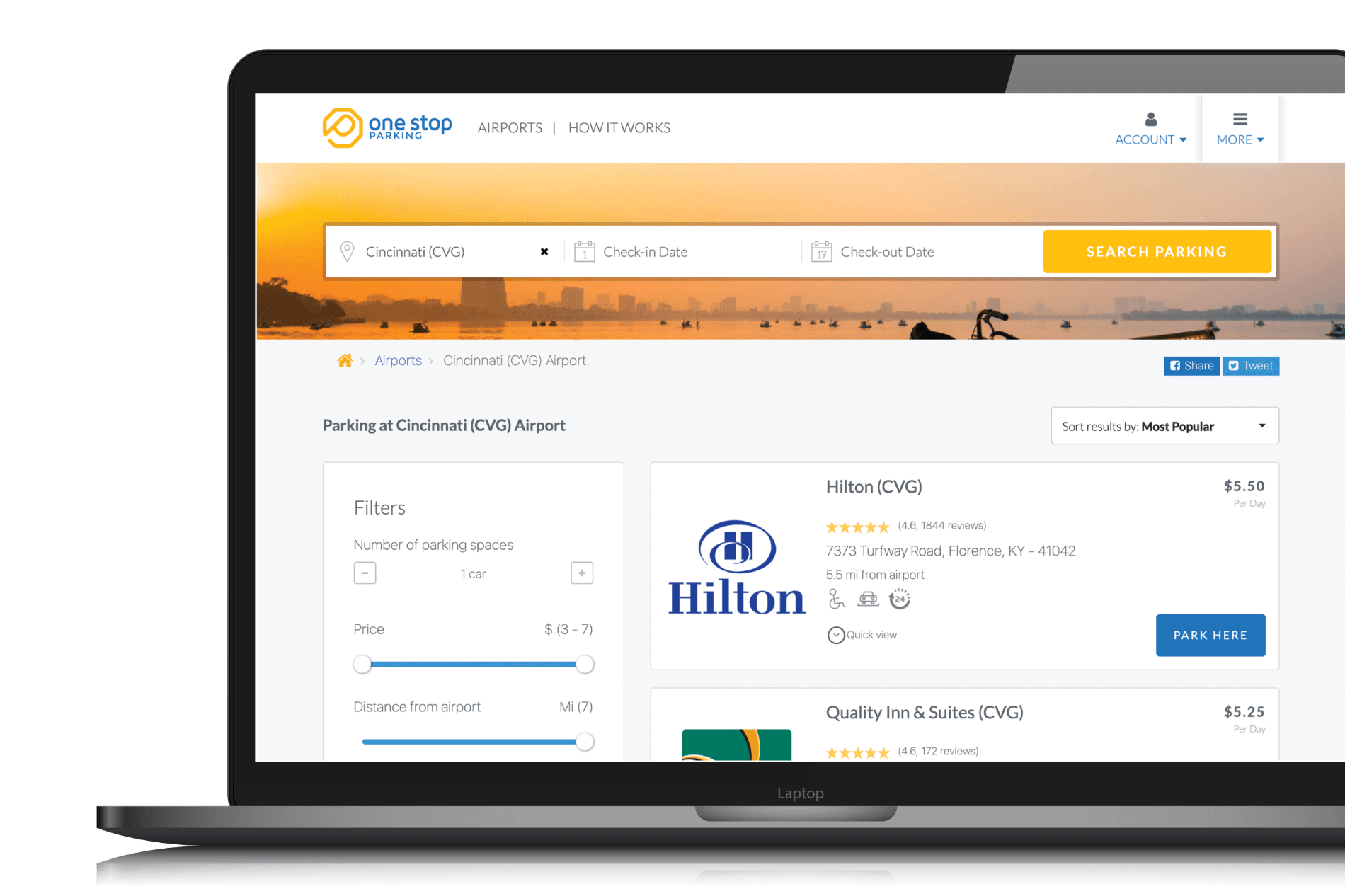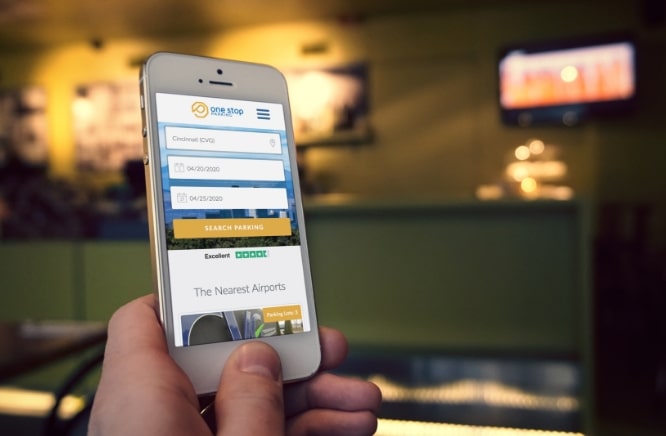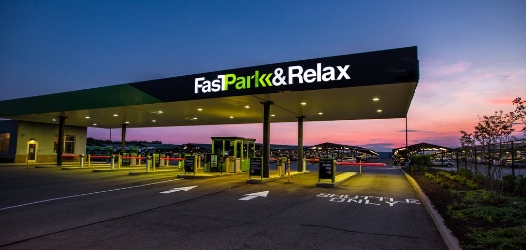
Partnered with a parking provider’s in-house staff, resulting in triple the amount of bookings.
The Challenge
OneStopParking.com, a discount airport parking marketplace, was managing paid search in-house. However, their paid search efforts took time away from running the business, and they knew they could use a PPC expert to push their business even further. They approached us to manage the campaigns to improve cost and performance, and we were ready to deliver.

The Breakthrough
The OneStop Parking team was doing a great job running their paid search efforts, but there are often common problems that can create inefficiencies:
- Both the search and display network were enabled under the same campaign. This is never advisable as the two networks require different optimization strategies and serve slightly different purposes.
- Ad extensions were not being utilized at all. Google has made it clear that ad extensions can improve click-through rates. Google loves ad extensions so much that using them can immediately boost quality score and reduce click costs.
- Account structure could use some improvement. While they had set up campaigns and ad groups fairly well, reviewing the search query reports showed the existing ad groups could be broken down to more tightly target keywords and ads together. This would result in an increase in quality score and reduced cost per click.
- There were few negative keywords in the account, leading to far too many irrelevant impressions and clicks, lower click-through rates, and higher cost per sale than necessary.
With our fresh eyes on the site, we also identified some UX issues that likely reduced conversion rates.
- Landing pages listed all parking locations for the selected airport. However, sold-out locations were sorted at the top of the list. In some cases, this resulted in only sold-out locations being shown above the fold. This could cause someone to believe all locations for the selected airport were sold out, even if that was not the case.
- Changing drop-off or pick-up dates required a completely new search, including re-entering the airport. This was a cumbersome and confusing process. We user-tested this with a small group, and most users couldn’t figure out how to adjust the dates at all.
THE SOLUTION
With our fresh perspective, we were able to develop an action plan that would create major efficiencies:
- We disabled the display network completely. Because this was a direct response campaign to drive bookings, there was plenty of volume to consume the client’s budget on the search network alone.
- We set up ad extensions to improve click-through rate and quality score.
- We grouped keywords into more tightly targeted ad groups and wrote all new ads.
- We reviewed the search query reports and Google’s keyword tool to identify negative keywords at both the campaign and ad group level.
- We tested ad variations and ad position to reduce further the cost per sale over the next several months.

The Results
The first month we took over costs actually increased about 15%. This is not uncommon when increasing bids to target a higher ad position, establish a performance benchmark. It can be challenging to establish performance benchmarks at lower ad positions because click-through rates are always lower than average at lower ad positions. Bidding for a higher ad position allowed us to get a picture of the best possible click-through rate.
In the next two months, costs dropped dramatically. By the third month, cost per sale was down 66% from baseline and continued a slow decline over the following months. The client opted to triple the budget allowing us to scale those results to drive 3x as many bookings for the same ad spend as before they hired us.






